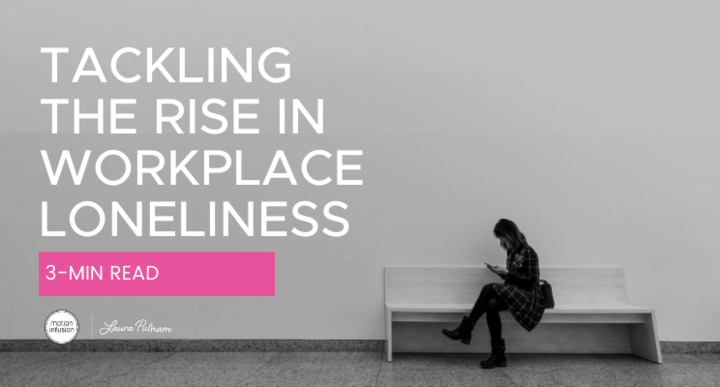|
More Americans than ever are feeling lonely and socially isolated. This lack of social connection is having profound effects on our mental and physical health, according to a warning released by the Surgeon General on May 1st. This formal advisory is the first time America’s top doctor has issued a warning about loneliness and adds to growing concern that the epidemic will only get worse as remote and hybrid work models become permanent for millions of American's. Rates of loneliness, which were already at record highs pre-pandemic, have only gotten worse post-pandemic. The impact of it is likely to be devastating. In fact, the Surgeon General cited earlier research showing that loneliness is as deadly as smoking. After working with hundreds of organizations and over 20,000 CEOs and managers to implement workplace well-being strategies, I strongly believe that the shift toward hybrid and remote work is only going to make the loneliness epidemic worse. That said, it’s clear that hybrid and remote work is here to stay. So, given these challenges, here are three ways employers can cultivate connection with their employees to mitigate the effects of the rise in loneliness: 1. Well-being needs to be seen as a collective responsibility. The narrative that continues to dominate in wellness, and workplace wellness specifically, is one in which the pursuit of better health and well-being is just a matter of “taking personal responsibility.” This outdated notion of placing the onus on the individual to seek help gives employers a hall pass on having to do the work in tackling larger systemic issues in the workplace - such as work overload or toxicity as a cultural norm. As a recent McKinsey Report demonstrates, this individual-solution strategy, embraced by most organizations, is effectively solving the wrong problem - especially when it comes to addressing mental health issues, such as burnout, anxiety, depression and loneliness. “Employers tend to overlook the role of the workplace in driving employee mental health and well-being, engagement and performance.”
In their 15-country survey, the McKinsey Health Institute researchers found that the biggest contributor to rising rates of burnout in the workplace - by a giant margin of 60% - was toxic workplace behavior. This culture of toxicity was also the biggest predictor of intent to leave the company. Upshot: Businesses need to understand that employee well-being is a collective responsibility, necessitating a full-throttled support from the CEO on down. Moreover, employee well-being cannot be the sole responsibility of the HR department or the wellness committee. 2. Managers can be multipliers of well-being. The good news is that every organization can make a difference, translating intention into impact. And, the solution lies in engaging every manager as a Multiplier of Well-Being. As long-standing Gallup research shows, along with our own published data, team leaders play a critical role in cultivating a safe and caring workplace environment. To end the stigma around mental health, including discussions about loneliness, managers should be encouraged to speak openly about their own personal challenges. When managers do this it shows compassion and creates a safe place where employees can express themselves freely without fear of judgment. In addition, managers need to be trained on how well-being interfaces with being an effective leader, and tangible steps they can take to make a difference for their team. As we advocate in our Managers on the Move leadership-meets-wellness training program, every manager can make a measurable difference for their team - and themselves - through three simple steps: Do (lead by example), Speak (talk about well-being in a transparent and human way), and Create (devise team-based systems that normalize well-being within the team). 3. Encourage team care, not just self-care. Ultimately, the goal is to shift the focus from encouraging self-care to seeking better well-being through team care. Establishing a culture of friendship within a team is critical. Teams can implement rituals, such as a moment of silence or expressions of gratitude at the start of meetings. These kinds of team care rituals can go a long way in building both friendships as well as psychological safety. Our best hope in tackling the loneliness epidemic is through teams, fostering a culture-based approach to better well-being at work. mE AT MY BEST® ONLINE COURSEIT'S ALL TOO EASY TO LOSE SIGHT OF BECOMING YOUR BEST SELF.
0 Comments
Leave a Reply. |
Follow laura on social:Website by Brand Genie
|
join laura's monthly newsletter
|





